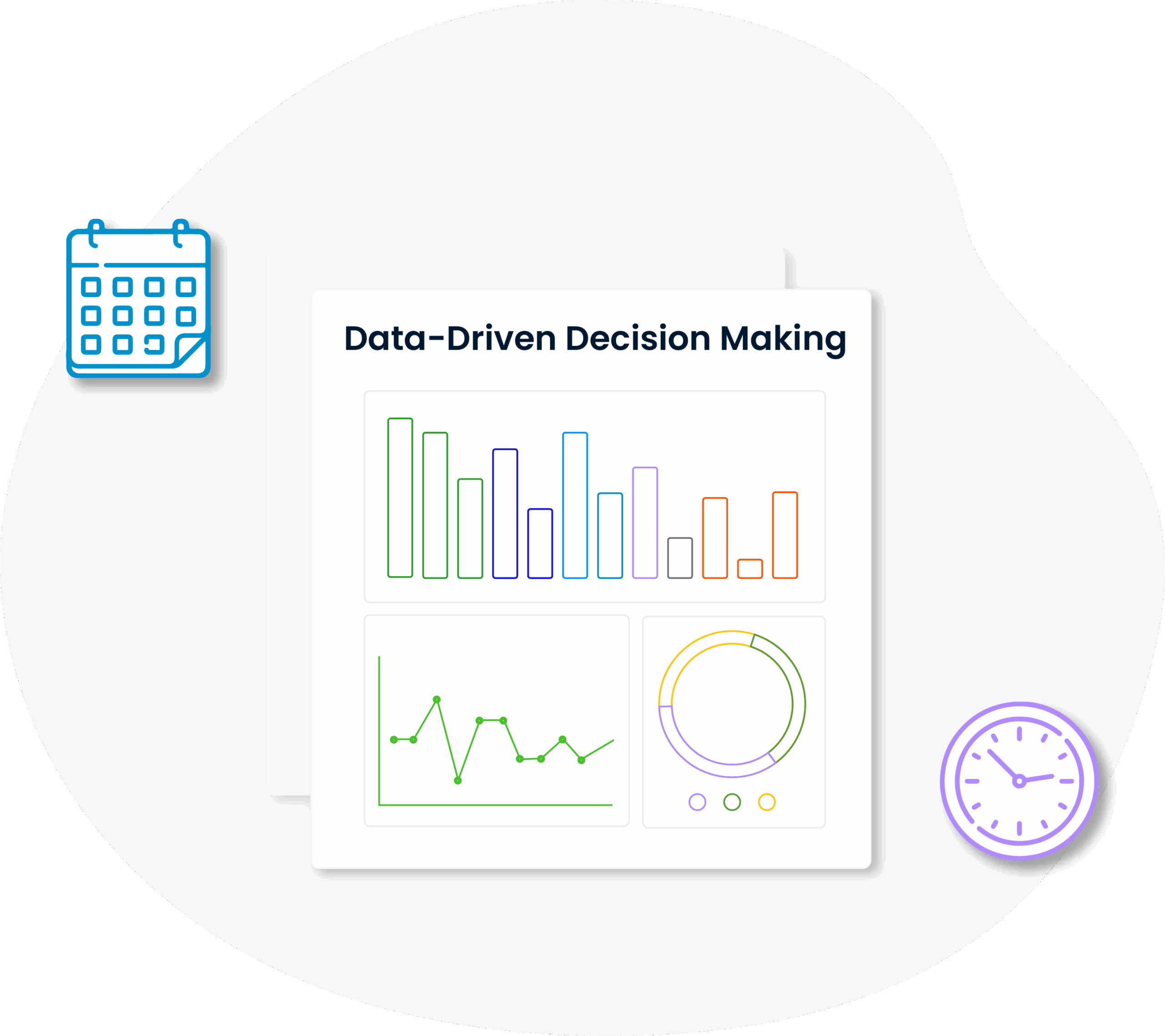Service Level Agreement (SLA)
Service Level Agreement (SLA) is the commitment between the IT provider and the user. Easily track service standards by metrics and targets in the SLA with alert mechanisms and colorful interfaces!
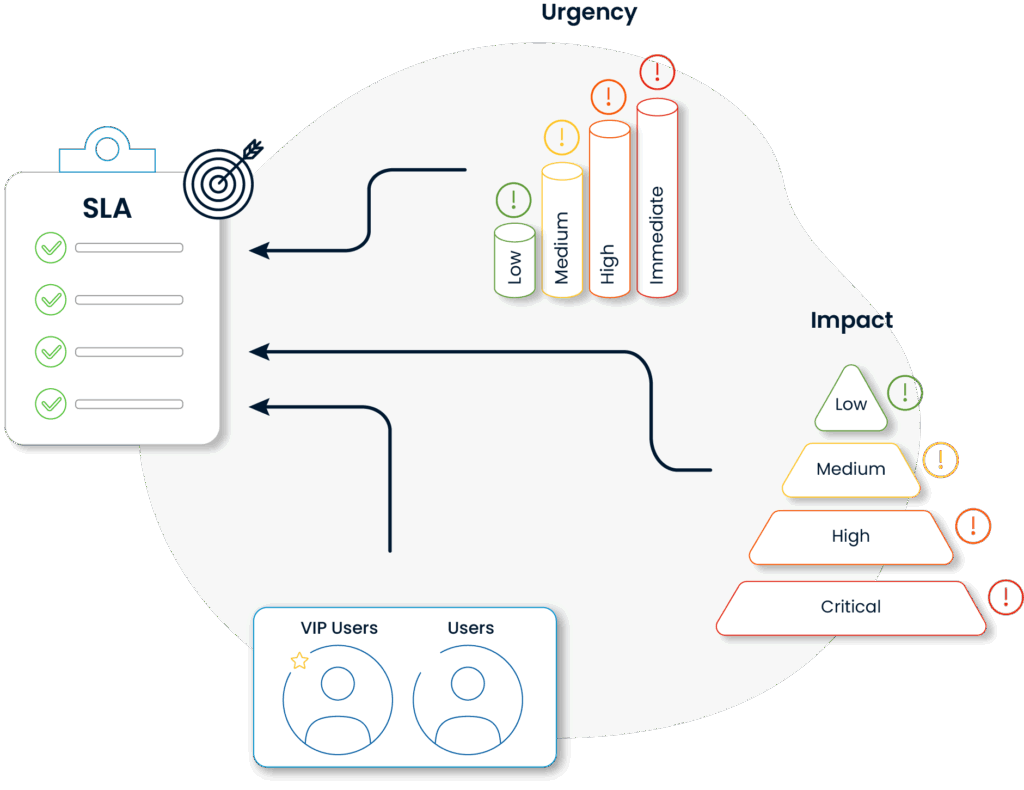

Service Level Agreement (SLA) is the commitment between the IT provider and the user. Easily track service standards by metrics and targets in the SLA with alert mechanisms and colorful interfaces!
Benefits of the Service Level Agreement (SLA)

The SLA clearly defines service levels and makes expectations clear for both the provider and the user. Processes operate according to set standards and service interruptions are prevented. This makes IT service quality sustainable.

Real-time SLA monitoring through the dashboard provides information about the instant performance status. Thus, managers can detect potential disruptions before they reach critical levels. This feature makes a difference in high-volume support operations.

Successful fulfillment of SLA targets increases user confidence in the service. Timely resolution of requests positively affects the customer experience.

Thanks to escalation rules, situations that pose a risk of SLA (service level agreement) violation are automatically reported to administrators. Thus, problems are intervened before they escalate. Proactive monitoring approach minimizes the impact of service interruptions.

Service Level Agreement performance is analyzed with detailed reports and weak points are identified. Through continuous measurement, SLA targets are optimized over time. This supports a culture of continuous improvement within the ITIL framework.
The SLA clearly defines service levels and makes expectations clear for both the provider and the user. Processes operate according to set standards and service interruptions are prevented. This makes IT service quality sustainable.
Real-time SLA monitoring through the dashboard provides information about the instant performance status. Thus, managers can detect potential disruptions before they reach critical levels. This feature makes a difference in high-volume support operations.
Successful fulfillment of SLA targets increases user confidence in the service. Timely resolution of requests positively affects the customer experience.
Thanks to escalation rules, situations that pose a risk of SLA (service level agreement) violation are automatically reported to administrators. Thus, problems are intervened before they escalate. Proactive monitoring approach minimizes the impact of service interruptions.
Service Level Agreement performance is analyzed with detailed reports and weak points are identified. Through continuous measurement, SLA targets are optimized over time. This supports a culture of continuous improvement within the ITIL framework.
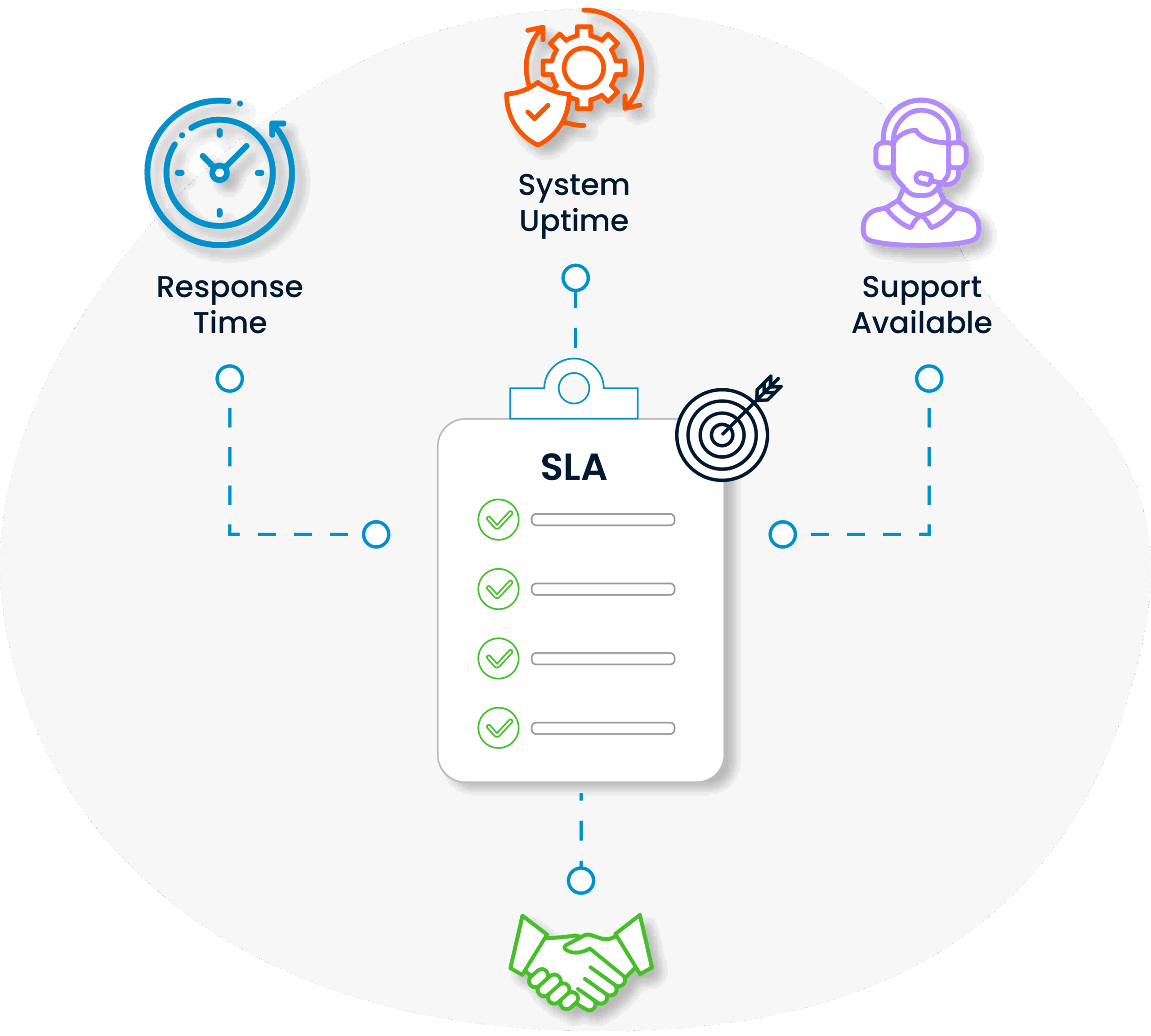
Warning: Undefined array key "background_image" in /home/spidyac/public_html/wp-content/plugins/elementor/includes/conditions.php on line 87
Warning: Trying to access array offset on value of type null in /home/spidyac/public_html/wp-content/plugins/elementor/includes/conditions.php on line 90
Warning: Undefined array key "background_image" in /home/spidyac/public_html/wp-content/plugins/elementor/includes/conditions.php on line 87
Warning: Trying to access array offset on value of type null in /home/spidyac/public_html/wp-content/plugins/elementor/includes/conditions.php on line 90
Within the scope of the Service Level Agreement, it is clearly defined which service will be provided and under what conditions. For example; critical metrics such as response time of support requests, system availability rate are clearly defined. This eliminates the risk of conflicts.
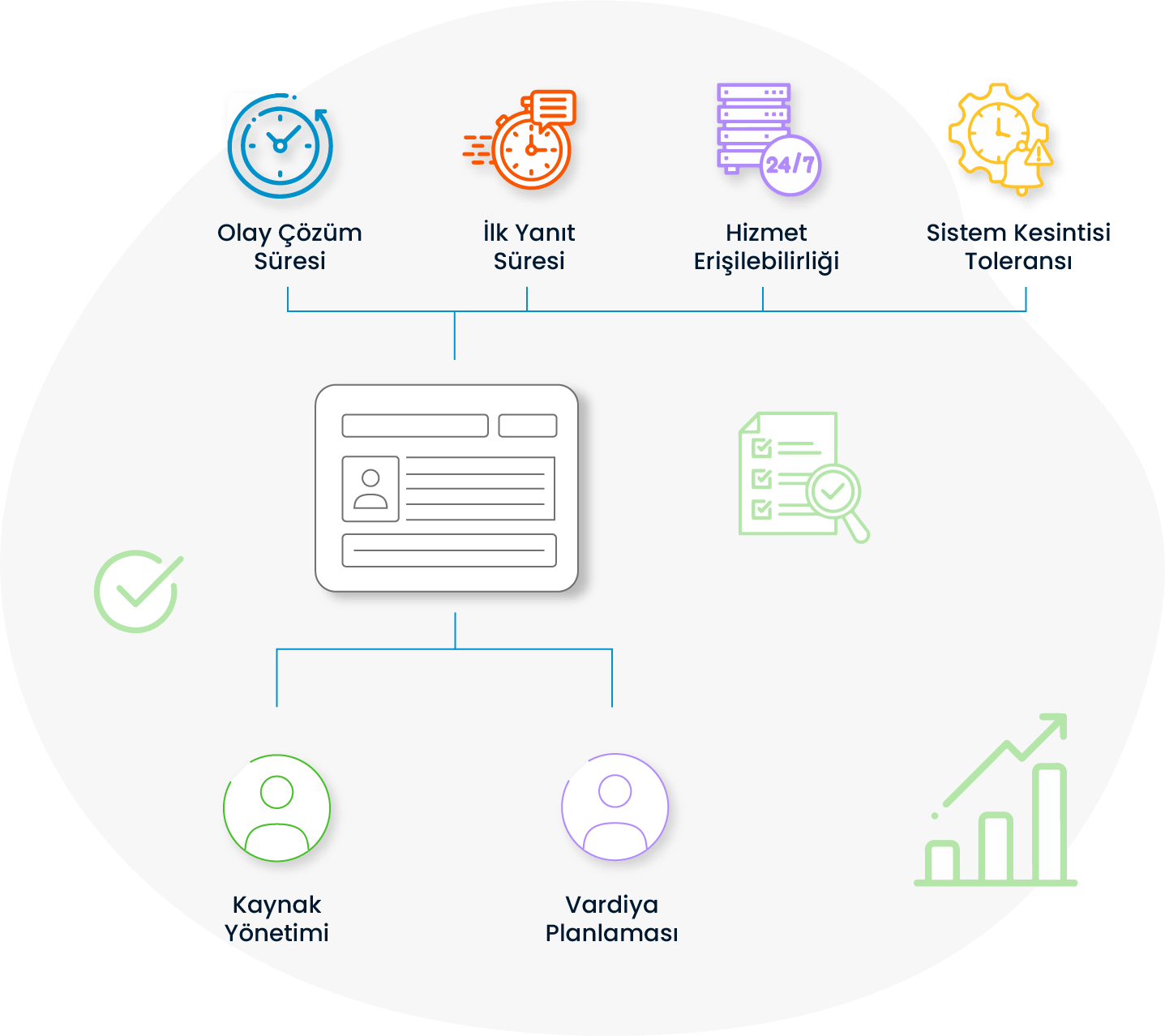
Warning: Undefined array key "background_image" in /home/spidyac/public_html/wp-content/plugins/elementor/includes/conditions.php on line 87
Warning: Trying to access array offset on value of type null in /home/spidyac/public_html/wp-content/plugins/elementor/includes/conditions.php on line 90
Warning: Undefined array key "background_image" in /home/spidyac/public_html/wp-content/plugins/elementor/includes/conditions.php on line 87
Warning: Trying to access array offset on value of type null in /home/spidyac/public_html/wp-content/plugins/elementor/includes/conditions.php on line 90
Warning: Undefined array key "background_image" in /home/spidyac/public_html/wp-content/plugins/elementor/includes/conditions.php on line 87
Warning: Trying to access array offset on value of type null in /home/spidyac/public_html/wp-content/plugins/elementor/includes/conditions.php on line 90
Warning: Undefined array key "background_image" in /home/spidyac/public_html/wp-content/plugins/elementor/includes/conditions.php on line 87
Warning: Trying to access array offset on value of type null in /home/spidyac/public_html/wp-content/plugins/elementor/includes/conditions.php on line 90
Warning: Undefined array key "background_image" in /home/spidyac/public_html/wp-content/plugins/elementor/includes/conditions.php on line 87
Warning: Trying to access array offset on value of type null in /home/spidyac/public_html/wp-content/plugins/elementor/includes/conditions.php on line 90
Warning: Undefined array key "background_image" in /home/spidyac/public_html/wp-content/plugins/elementor/includes/conditions.php on line 87
Warning: Trying to access array offset on value of type null in /home/spidyac/public_html/wp-content/plugins/elementor/includes/conditions.php on line 90
The targets set within the SLA include performance criteria such as incident resolution time, initial response time, service availability and system outage tolerances. These metrics provide a concrete measure of the extent to which IT services meet expectations.
SLA targets shape not only operational quality but also strategic planning. Resource management, shift planning and prioritization decisions are made according to these targets.
Objectives structured within the framework of ITIL both discipline internal processes and contribute directly to customer satisfaction.
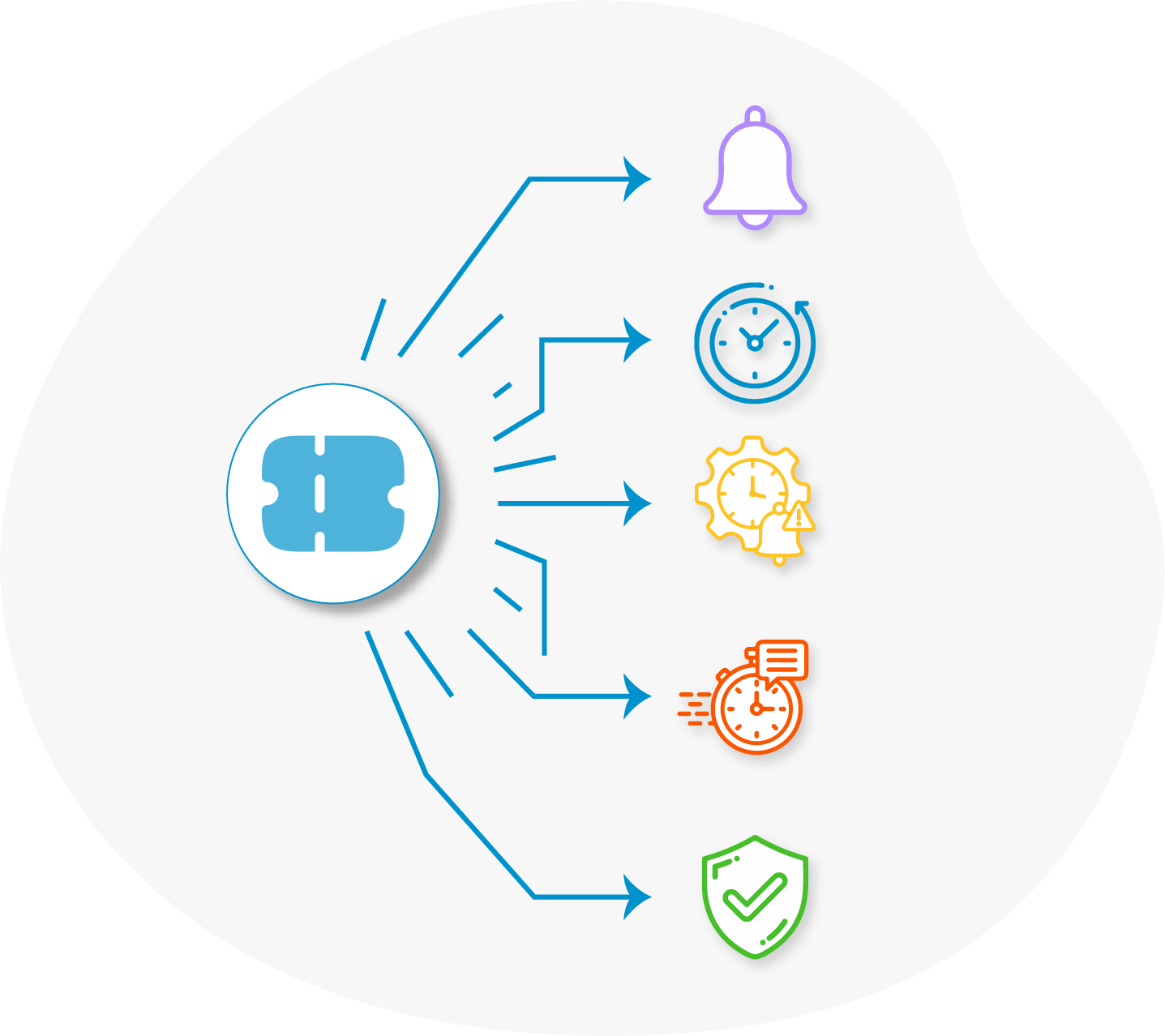
Warning: Undefined array key "background_image" in /home/spidyac/public_html/wp-content/plugins/elementor/includes/conditions.php on line 87
Warning: Trying to access array offset on value of type null in /home/spidyac/public_html/wp-content/plugins/elementor/includes/conditions.php on line 90
Warning: Undefined array key "background_image" in /home/spidyac/public_html/wp-content/plugins/elementor/includes/conditions.php on line 87
Warning: Trying to access array offset on value of type null in /home/spidyac/public_html/wp-content/plugins/elementor/includes/conditions.php on line 90
The SLA process is automatically initiated and tracked from the moment the event is opened. Thanks to automatic counters and alerts, the need for manual control is reduced. Thus, the process becomes both faster and more reliable.

Warning: Undefined array key "background_image" in /home/spidyac/public_html/wp-content/plugins/elementor/includes/conditions.php on line 87
Warning: Trying to access array offset on value of type null in /home/spidyac/public_html/wp-content/plugins/elementor/includes/conditions.php on line 90
Warning: Undefined array key "background_image" in /home/spidyac/public_html/wp-content/plugins/elementor/includes/conditions.php on line 87
Warning: Trying to access array offset on value of type null in /home/spidyac/public_html/wp-content/plugins/elementor/includes/conditions.php on line 90
When certain thresholds are exceeded, the system sends automatic notifications to administrators or a higher support layer. This structure prevents critical events from being overlooked. These rules, set within the SLA, play a vital role for service continuity.
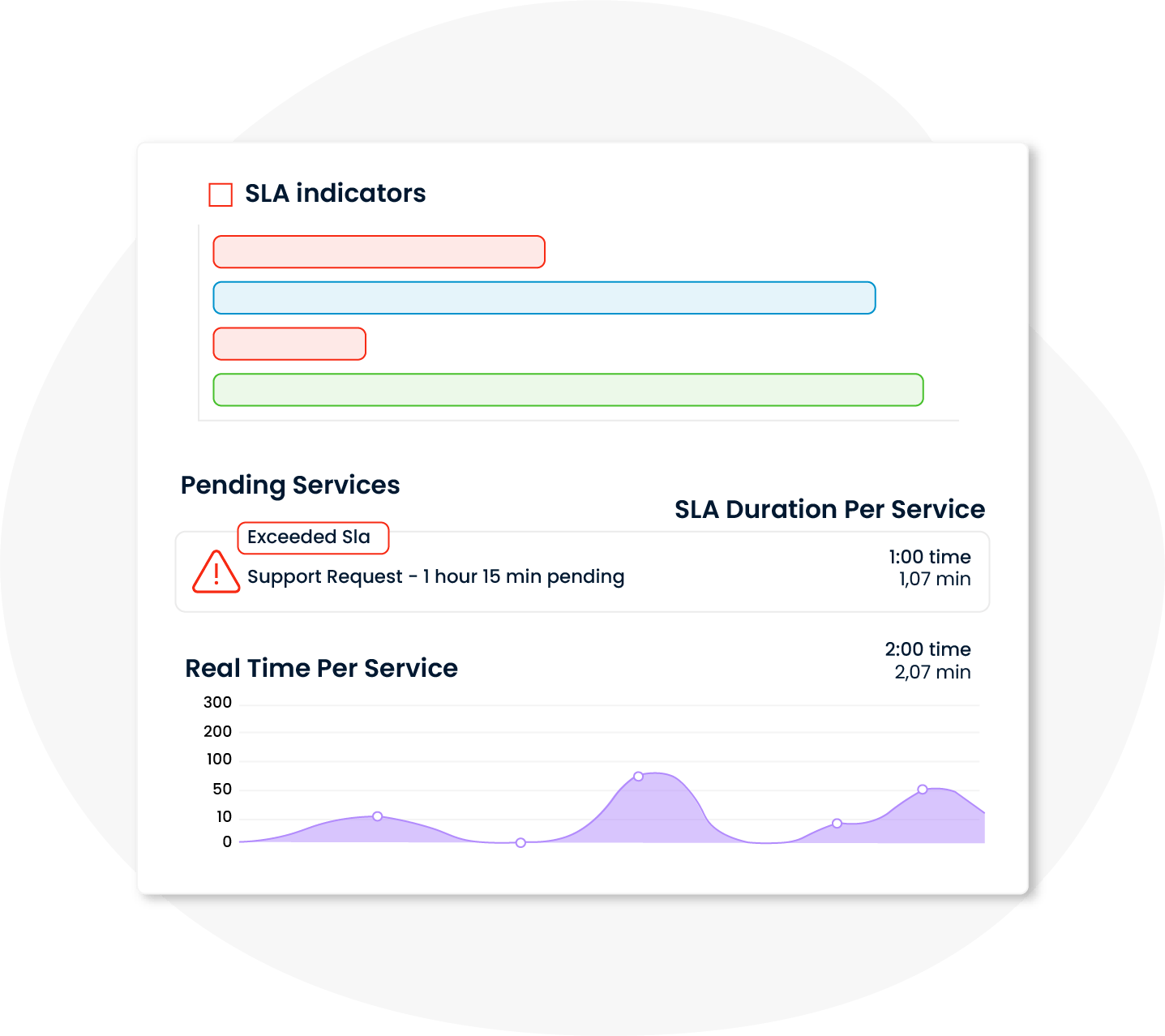
Warning: Undefined array key "background_image" in /home/spidyac/public_html/wp-content/plugins/elementor/includes/conditions.php on line 87
Warning: Trying to access array offset on value of type null in /home/spidyac/public_html/wp-content/plugins/elementor/includes/conditions.php on line 90
Warning: Undefined array key "background_image" in /home/spidyac/public_html/wp-content/plugins/elementor/includes/conditions.php on line 87
Warning: Trying to access array offset on value of type null in /home/spidyac/public_html/wp-content/plugins/elementor/includes/conditions.php on line 90
LA performance can be viewed instantly with dashboards and colorful interfaces. It can be clearly monitored which service has been pending for how long or which limits have been exceeded. In this way, instant intervention capability increases.
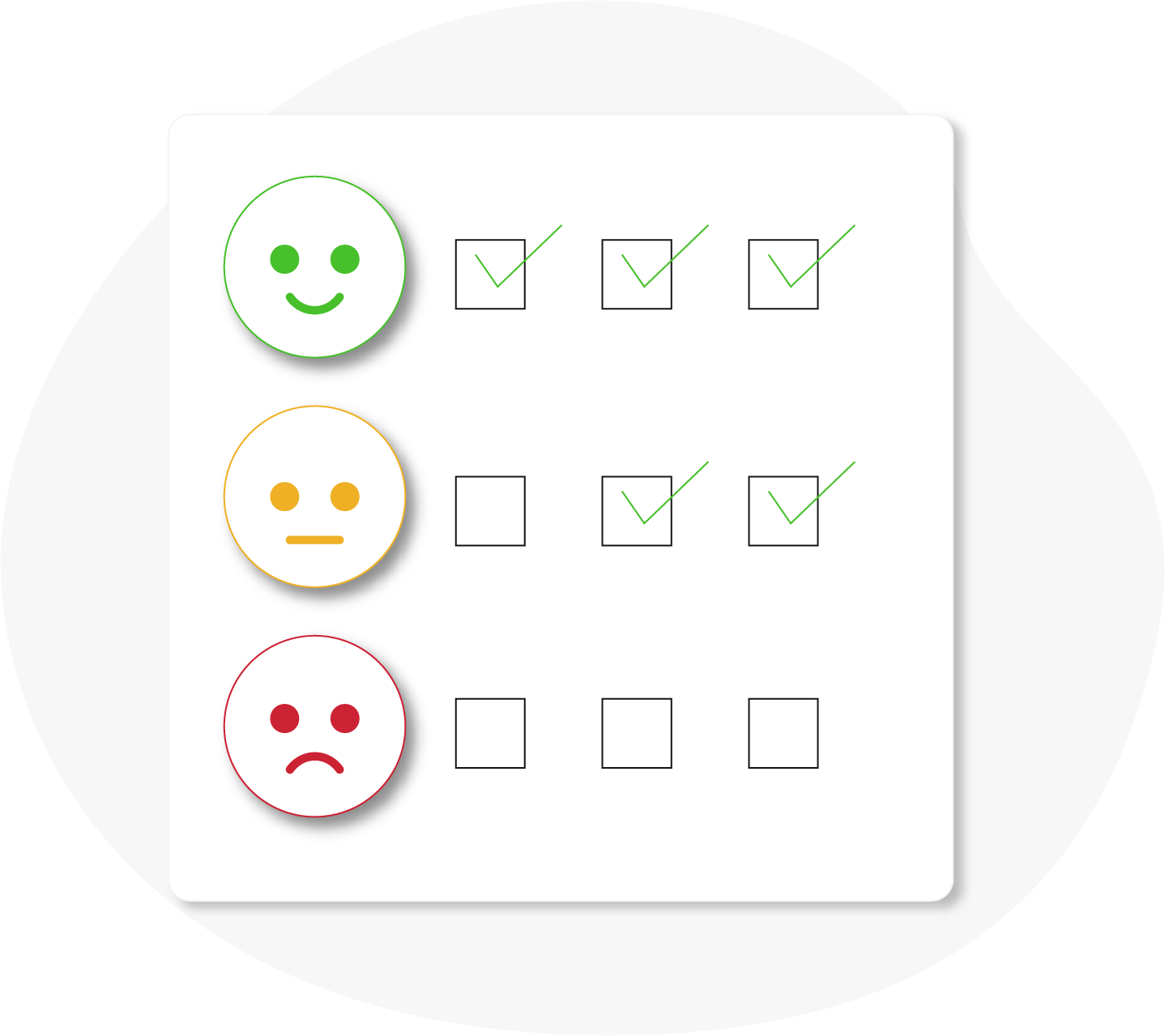
Warning: Undefined array key "background_image" in /home/spidyac/public_html/wp-content/plugins/elementor/includes/conditions.php on line 87
Warning: Trying to access array offset on value of type null in /home/spidyac/public_html/wp-content/plugins/elementor/includes/conditions.php on line 90
Warning: Undefined array key "background_image" in /home/spidyac/public_html/wp-content/plugins/elementor/includes/conditions.php on line 87
Warning: Trying to access array offset on value of type null in /home/spidyac/public_html/wp-content/plugins/elementor/includes/conditions.php on line 90
Once the SLA is completed, the quality of the service is measured by obtaining feedback from users. Satisfaction data allows the service provider to see the weak points. In SLA management, this data is used for improvement actions. Creates data in XLA management.
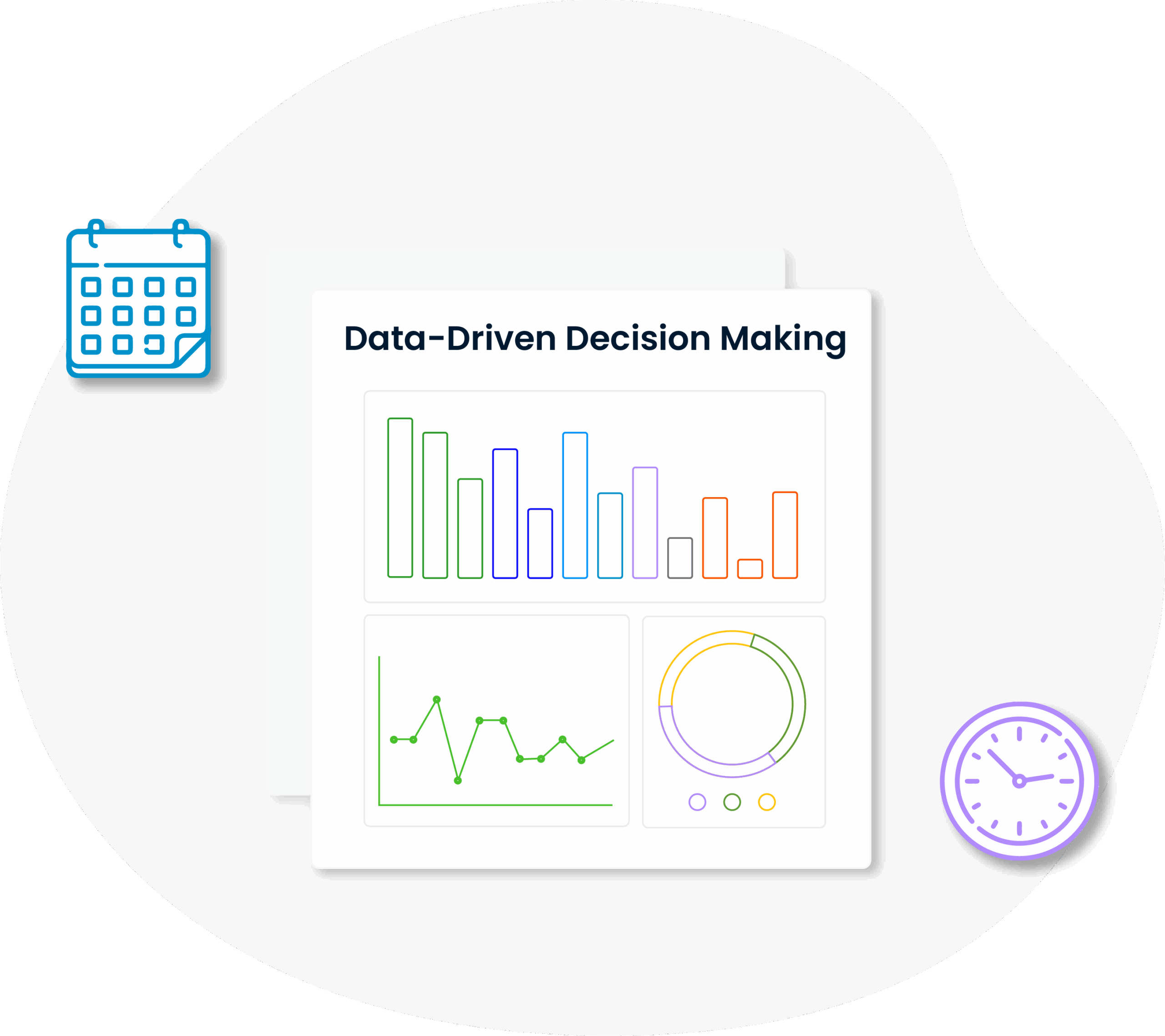
Warning: Undefined array key "background_image" in /home/spidyac/public_html/wp-content/plugins/elementor/includes/conditions.php on line 87
Warning: Trying to access array offset on value of type null in /home/spidyac/public_html/wp-content/plugins/elementor/includes/conditions.php on line 90
Warning: Undefined array key "background_image" in /home/spidyac/public_html/wp-content/plugins/elementor/includes/conditions.php on line 87
Warning: Trying to access array offset on value of type null in /home/spidyac/public_html/wp-content/plugins/elementor/includes/conditions.php on line 90
Process effectiveness is measured by creating detailed SLA reports based on historical data. Service level performance is periodically analyzed and presented to senior management. In this way, data-based decision making is supported.

The SLA clearly defines service levels and makes expectations clear for both the provider and the user. Processes operate according to set standards and service interruptions are prevented. This makes IT service quality sustainable.

Real-time SLA monitoring through the dashboard provides information about the instant performance status. Thus, managers can detect potential disruptions before they reach critical levels. This feature makes a difference in high-volume support operations.

Successful fulfillment of SLA targets increases user confidence in the service. Timely resolution of requests positively affects the customer experience.

Thanks to escalation rules, situations that pose a risk of SLA (service level agreement) violation are automatically reported to administrators. Thus, problems are intervened before they escalate. Proactive monitoring approach minimizes the impact of service interruptions.

Service Level Agreement performance is analyzed with detailed reports and weak points are identified. Through continuous measurement, SLA targets are optimized over time. This supports a culture of continuous improvement within the ITIL framework.
Features of the Service Level Agreement (SLA) Module
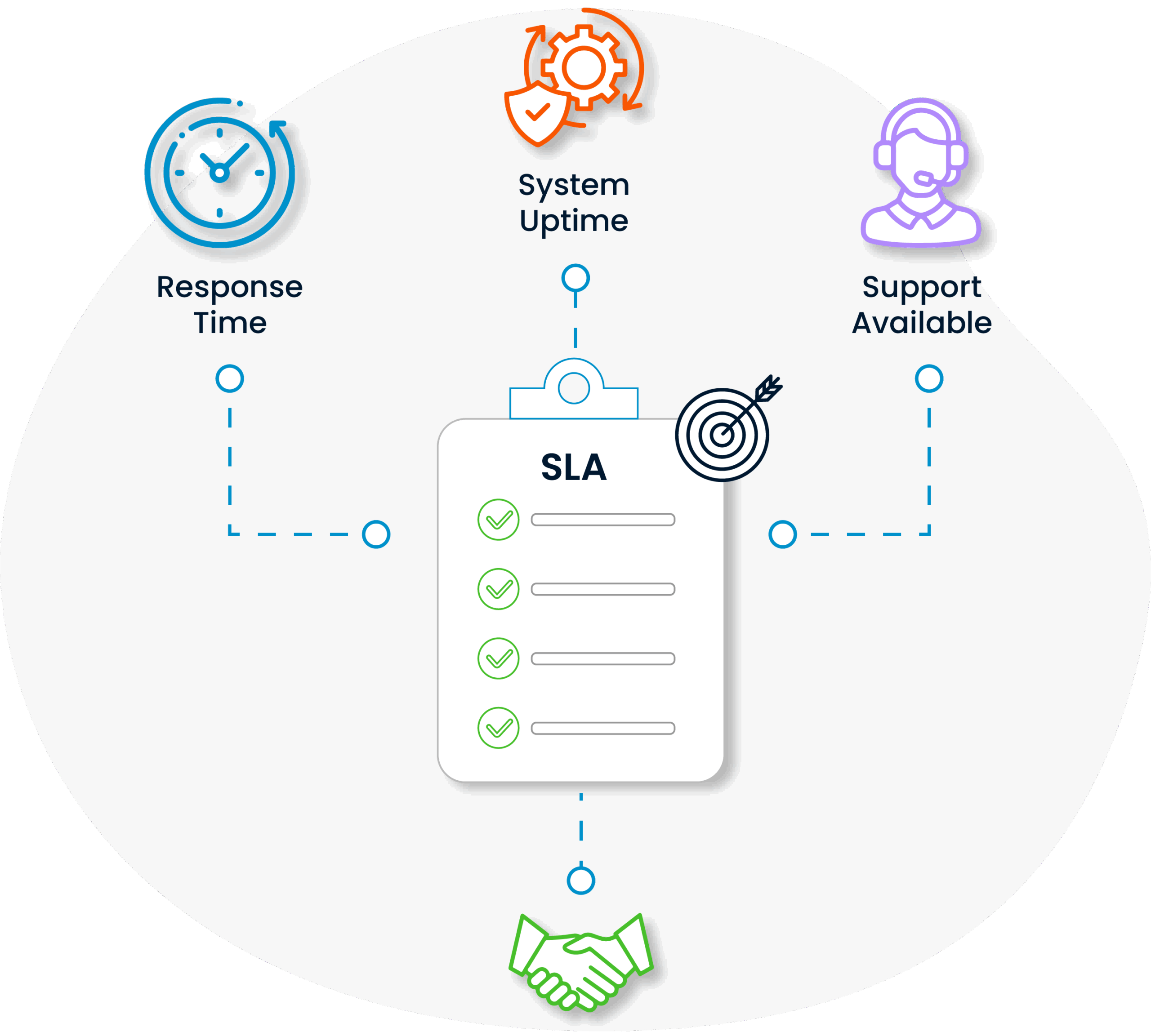
Service Level Definitions
SLA Targets
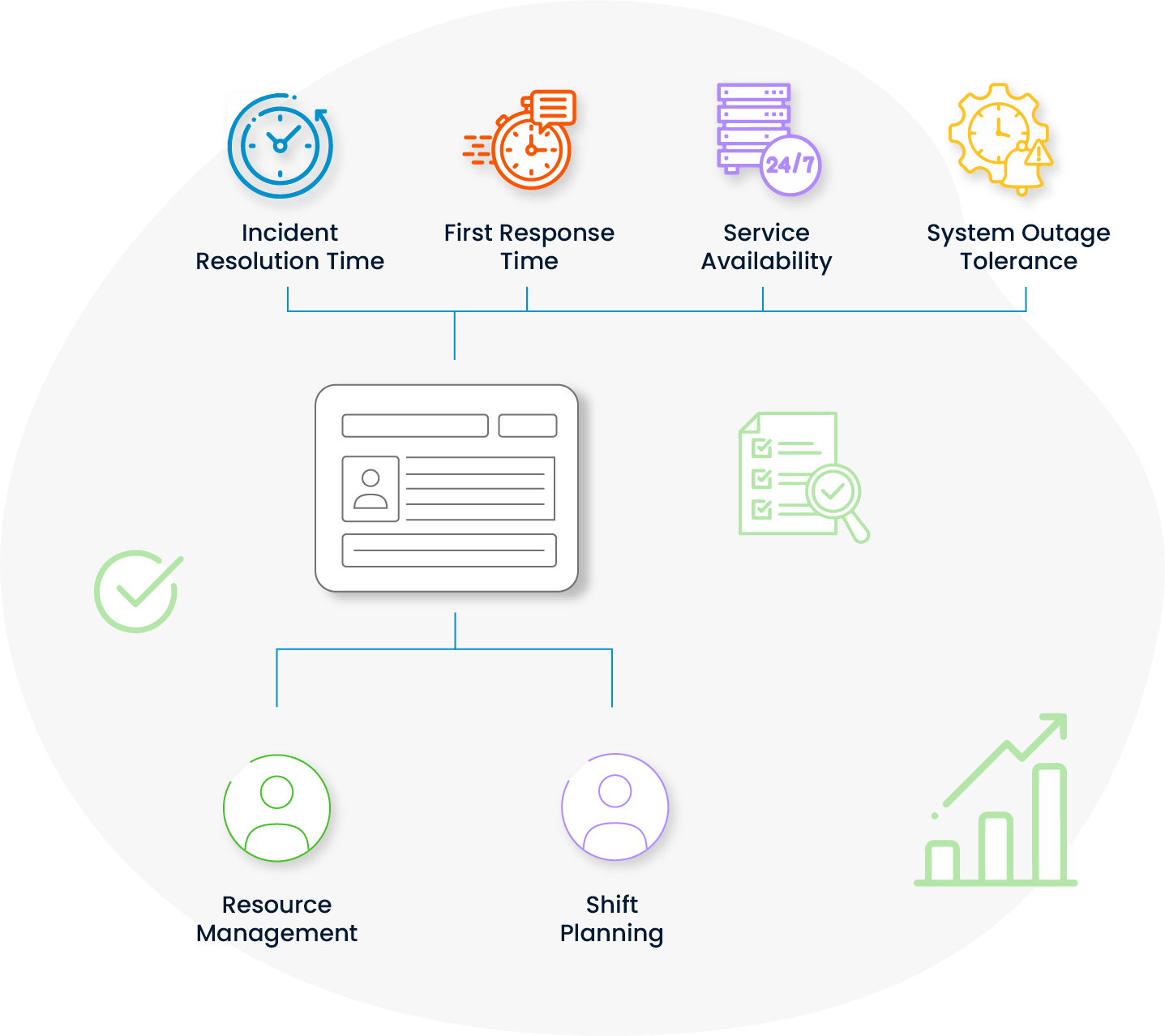


Frequently Asked Questions (FAQ)
The SLA clarifies the scope, quality and responsibilities of the service between the service provider and the user. This creates an environment of trust in both operational processes and customer relations. It also ensures that service success is measurable.
Metrics are defined according to the type of service and business criticality. For example, elements such as the uptime rate of an e-mail system, response time of help desk requests can be taken as metrics. When determining SLA metrics, customer expectations and technical capacity should be evaluated together.
In case of SLA breach, predetermined escalation rules are activated and necessary actions are initiated. This usually takes the form of an automatic notification to the relevant managers and the involvement of a higher level of support. The breach is reported and a root cause analysis is performed.
No, it is not. Small and medium-sized enterprises can also standardize their service processes using SLAs. Especially for SMEs outsourcing services, the SLA plays a critical role as a quality control tool. This clarifies service expectations.
Yes. Modern SLA software automates SLA processes from start to finish with event triggers, alerts and timers. This reduces the burden of manual follow-up and minimizes the risk of human error. This structure ensures both speed and accuracy.
SLA reports allow you to analyze service performance with objective data. It is clearly displayed which targets have been achieved and which ones have failed. In this way, both internal processes are improved and accountability to senior management increases.
If You Have Any Other Questions, Contact Us!
The SLA clarifies the scope, quality and responsibilities of the service between the service provider and the user. This creates an environment of trust in both operational processes and customer relations. It also ensures that service success is measurable.
Metrics are defined according to the type of service and business criticality. For example, elements such as the uptime rate of an e-mail system, response time of help desk requests can be taken as metrics. When determining SLA metrics, customer expectations and technical capacity should be evaluated together.
In case of SLA breach, predetermined escalation rules are activated and necessary actions are initiated. This usually takes the form of an automatic notification to the relevant managers and the involvement of a higher level of support. The breach is reported and a root cause analysis is performed.
No, it is not. Small and medium-sized enterprises can also standardize their service processes using SLAs. Especially for SMEs outsourcing services, the SLA plays a critical role as a quality control tool. This clarifies service expectations.
Yes. Modern SLA software automates SLA processes from start to finish with event triggers, alerts and timers. This reduces the burden of manual follow-up and minimizes the risk of human error. This structure ensures both speed and accuracy.
SLA reports allow you to analyze service performance with objective data. It is clearly displayed which targets have been achieved and which ones have failed. In this way, both internal processes are improved and accountability to senior management increases.

